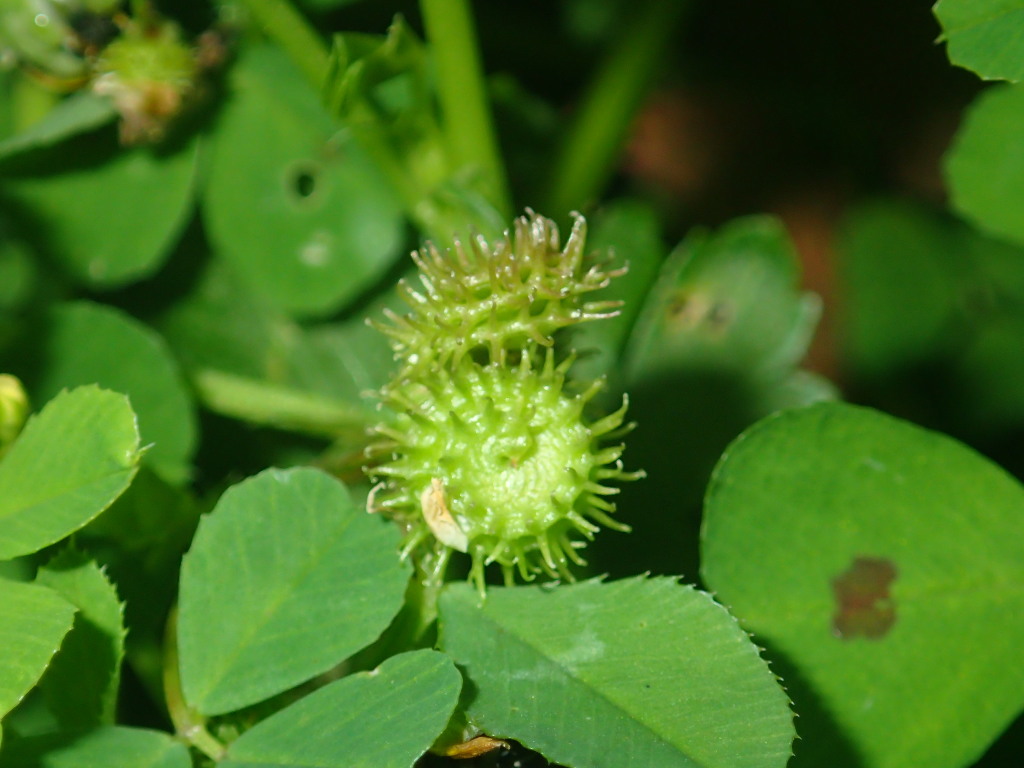Medicago arabica
(L.) Huds. Spotted MedicDecumbent or ascending annual herb; stems 40–60 cm long, sparsely hairy; hairs simple or mixed simple and glandular. Leaflets broadly obovate, 4–40 mm long, 5–45 mm wide, margins minutely dentate or entire, upper surface glabrous, usually with a dark patch near middle, lower surface sparsely appressed-hairy, apex truncate or emarginate with a terminal tooth; stipules to c. 15 mm long, dentate to laciniate, hairy on lower surface. Inflorescence 2–5-flowered; peduncle 0.5–2.5 cm long, shorter than subtending petiole. Flowers on pedicels to c. 1 mm long; calyx 2.5–3 mm long, teeth equal to or shorter than tube; corolla yellow; standard 4–5 mm long; wings shorter than keel. Pods with 3–7 coils, cylindric or subglobose, 5–7 mm long, 4–7 mm diam., glabrous, spiny; coil edge broad, with 3 grooves; face with 5–8 radial veins; veins faint, anastomosing; marginal vein grooved, separated from submarginal veins by grooves; spines 13–15 on each side of coil, to 4 mm long, curved over sides of coil; seeds 5–8, to c. 3 mm long, yellow. Flowers mainly Sep.–Jan.
MuM, Wim, GleP, VVP, VRiv, MuF, GipP, OtP, WaP, Gold, CVU, DunT, NIS, EGU, WPro, HSF, HNF, OtR, VAlp. Naturalised all States except NT. Native to Europe, northern Africa, the Middle East. Scattered widely across Victoria where it favours moist grassy places.
Jeanes, J.A. (1996). Fabaceae. In: Walsh, N.G.; Entwisle, T.J., Flora of Victoria Vol. 3, Dicotyledons Winteraceae to Myrtaceae, pp. 663–829. Inkata Press, Melbourne.
 Spinning
Spinning



